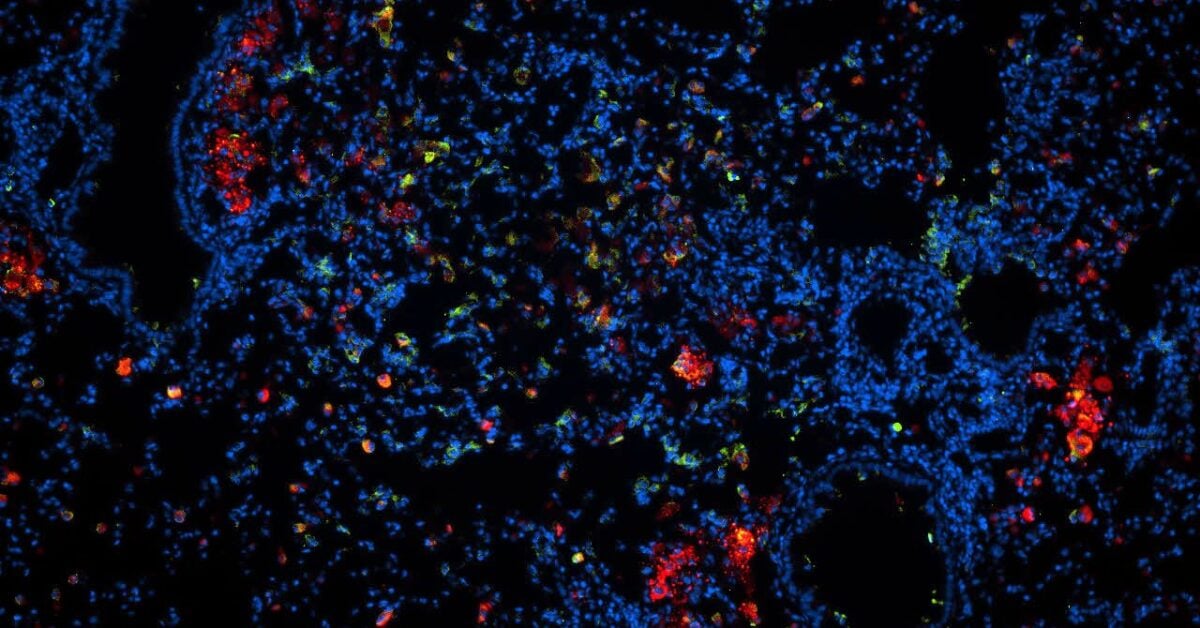Newsletter Signup - Under Article / In Page
"*" indicates required fields
Treatment of the dangerous infectious disease tuberculosis faces the challenge of pathogens frequently being resistant to several common antibiotics.
Researchers at Karlsruhe Institute of Technology (KIT) in Germany have developed nanoparticles to deliver new antibiotics directly to the lungs in the future. Surfactants ensure that the highly fat-soluble antibiotics disperse very finely in water and can be inhaled. First tests at the Research Center Borstel, Leibniz Lung Center, reveal a high effectiveness and good compatibility of the nanocarriers of antibiotics. The research was published in ACS Nano.
Tuberculosis is the infectious disease with the highest death rate worldwide. As reported by WHO, therapy-resistant tuberculosis infections are increasing. Diseases due to this bacterial infection may also occur in Germany. Tuberculosis represents a special challenge for two reasons. First, the bacteria encapsulate in tissue, mostly in the lungs, where they may be inactive for years and cause symptoms long after the primary infection. Second, tuberculosis bacteria are often resistant to two or more common antibiotics. Increasing occurrence of therapy-resistant strains is caused by insufficient drug concentrations at the place of infection and a premature termination of the treatment due to the often severe side effects of the antibiotics.
Nanomedical approach
A nanomedical approach can help to reduce the development of further resistances. Nanoparticles will be used to carry new antibiotics directly to the source of infection and infected cells. In this way, drug concentration may be increased locally in the lungs.
“However, newly developed antibiotics often are lipophilic and fat-soluble and cannot or can hardly be administered in water. They can hardly be absorbed when contained in the stomach, blood, or cell fluid,” said Claus Feldmann, head of a research group at KIT’s Institute for Inorganic Chemistry (AOC).
Presently, patients suffering from tuberculosis are treated with high doses over a long time in order to reach the pathogens. Severe side effects, such as liver damage, often cause terminations of the therapy, as a result of which further resistances develop. In the future, the researchers said, nanoparticles will be used for the specific delivery of antibiotics.
“We have already tested several nanocarriers for transporting antibiotics to the tuberculosis pathogens in mice. The new nanocarriers developed by our colleagues at KIT convinced me that it is possible to directly deliver high doses of antibiotics to the foci of tuberculosis in the lungs without affecting other organs,” said Ulrich E. Schaible, head of the Cellular Microbiology Group and director of the Research Center Borstel, Leibniz Lung Center.
KIT-developed particles can carry high drug concentrations
Researchers at KIT’s Institute for Inorganic Chemistry have succeeded in producing nanoparticles that can carry extremely high concentrations of antibiotics.
“Concentration of the antibiotic is up to 99% of the total weight of the particles,” Feldmann said.
“According to literature, a maximum of 10% only has been usually reached so far.”
The KIT-made nanocarriers can be dispersed in water. When inhaled, the aerosol goes deep into the lungs. At the Research Center Borstel, researchers under the direction of tuberculosis expert Schaible, in cooperation with other partners from Germany, Austria, and Belgium, tested the effectiveness of the nanoparticles with good results in both the lab and living organisms.
“Still, a lot of work will be needed until this aerosol formulation can be applied to humans,” Schaible said.
Overcoming biological barriers
The amorphous nanoparticles for inhalation contain a Bedaquilin concentration of 69% or a BTZ-043 concentration of 99%. Both antibiotics are effective against multi-resistant tuberculosis bacteria. Surfactants make the highly lipophilic antibiotics disperse in water. Dispersions with 4.0 mg of Bedaquilin / ml or 4.2 mg BTZ-043 / ml remain stable for several weeks. When tested in mice, the effectiveness of nanoparticle dispersions exceeded that of conventional BTZ-043 solutions for pulmonary inhalation by 50%.
The nanocarriers proved to be capable of overcoming various biological barriers. High concentrations were measured in the lungs, but not in the liver and spleen.
The work was carried out within the ANTI-TB project funded by the Federal Ministry of Education and Research (BMBF).
KIT and the Research Center Borstel have applied for a joint patent.
Partnering 2030: The Biotech Perspective 2023







